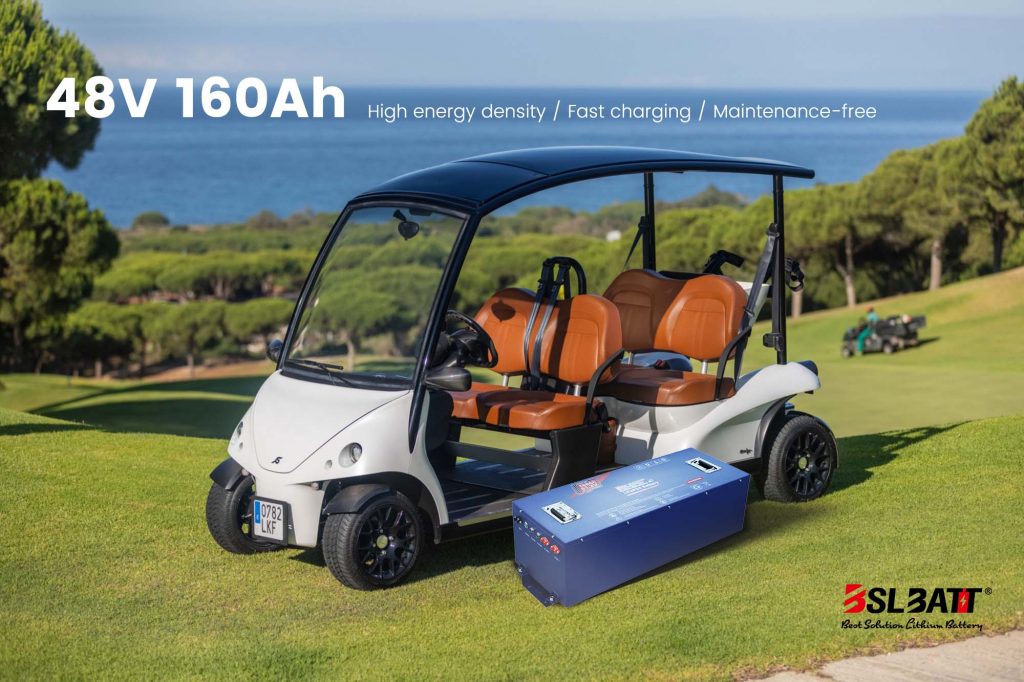Industry Application
Product Type
Why China Can Dominate Lithium-ion Battery Production
Is Lithium-ion the Ideal Battery?For many years, nickel-cadmium had been the only suitable battery for portable equipment from wireless communications to mobile computing. Nickel-metal-hydride and lithium-ion emerged In the early 1990s, fighting nose-to-nose to gain customer’s acceptance. Today, lithium-ion is the fastest growing and most promising battery chemistry. The world is becoming increasingly electrified. Not only are developing countries increasing the availability of electricity to their populations, but the electrification of existing transportation infrastructure is proceeding at a rapid pace. By 2040, over half of the cars on the roads are projected to be powered by electricity. A Brief History of BatteriesBatteries have been a part of our daily lives for a long time. The world’s first true battery was invented in 1800 by the Italian physicist Alessandro Volta. The invention represented a remarkable breakthrough, but since that time there have been only a handful of significant innovations. The first was the lead-acid battery, which was invented in 1859. This was the first rechargeable battery and is still the most common battery used to start internal combustion engines today. There have been some innovative battery designs in the past two centuries, but it wasn’t until 1980 that a real game-changer was invented. That was when breakthroughs at the University of Oxford and Stanford University led to the development of the lithium-ion battery. Sony commercialized the first lithium-ion battery in 1991. What’s so special about lithium?Lithium is a special metal in many ways. It’s light and soft — so soft that it can be cut with a kitchen knife and so low in density that it floats on water. It’s also solid at a wide range of temperatures, with one of the lowest melting points of all metals and a high boiling point. Like its fellow alkali metal, sodium, lithium reacts with water in showy form. The combo of Li and H2O forms lithium hydroxide and hydrogen, which typically burst into red flame. There are many aspects to Lithium-ion battery safety throughout its design processes, including safe battery structure, safe raw materials, protective functions and safety certifications. When interviewed by China Electronics News, Mr Su Jinran, deputy chief engineer, said that product safety began in product design, therefore selecting the right electrode materials, separators and electrolytes are the first priority for safe battery design. For battery anode materials, ternary materials, manganese lithium and lithium iron phosphate, which have been widely used in battery design and yielded satisfactory performance, are more secure than traditional lithium cobaltate and nickel lithium. Lithium-ion batteries are popular because they have a number of important advantages over competing technologies: ● They’re generally much lighter than other types of rechargeable batteries of the same size. The electrodes of a lithium-ion battery are made of lightweight lithium and carbon. Lithium is also a highly reactive element, meaning that a lot of energy can be stored in its atomic bonds. This translates into a very high energy density for lithium-ion batteries. Here is a way to get a perspective on energy density. A typical lithium-ion battery can store 150 watt-hours of electricity in 1 kilogram of battery. A NiMH (nickel-metal hydride) battery pack can store perhaps 100 watt-hours per kilogram, although 60 to 70 watt-hours might be more typical. A lead-acid battery can store only 25 watt-hours per kilogram. Using lead-acid technology, it takes 6 kilograms to store the same amount of energy that a 1-kilogram lithium-ion battery can handle. That’s a huge difference [source: Everything2.com]. ● They hold their charge. A lithium-ion battery pack loses only about 5 percent of its charge per month, compared to a 20 percent loss per month for NiMH batteries. ● They have no memory effect, which means that you do not have to completely discharge them before recharging, as with some other battery chemistries. ● Lithium-ion batteries can handle hundreds of charge/discharge cycles. ● That is not to say that lithium-ion batteries are flawless. They have a few disadvantages as well: ● They start degrading as soon as they leave the factory. They will only last two or three years from the date of manufacture whether you use them or not. ● They are extremely sensitive to high temperatures. Heat causes lithium-ion battery packs to degrade much faster than they normally would. ● If you completely discharge a lithium-ion battery, it is ruined. ● A lithium-ion battery pack must have an on-board computer to manage the battery. This makes them even more expensive than they already are. ● There is a small chance that, if a lithium-ion battery pack fails, it will burst into flame.
Innovation-based standard settingDue to the complexity in Lithium-ion battery safety mechanism, especially the impact on safety after re-using the batteries, the process of understanding Lithium-ion battery safety and setting its standards should be gradual and progressive. And the development and application of external control techniques should also be considered. Su suggested that as setting Lithium-ion battery safety standards is a highly technical job, both standard setting professionals from battery standardization bodies and technical specialists from the battery industry, users and electronic control areas should participate in the process, including experimental verification works. Senior engineer from China Electronics Standardization Institute, Mr Sun Chuanhao, said that Lithium-ion batteries currently could be divided into energy types and power types. As these two products have differences in materials and design structures, their testing methods and requirements are dissimilar, even under the same safety conditions. The so-called portable batteries belong to the energy type, including Lithium-ion batteries used in mobile phones, laptops, digital cameras and video cameras, while the power type battery is for power tools, electric bikes and electric vehicles. According to the research organization BloombergNEF, the volume-weighted average lithium-ion battery pack price (which includes the cell and the pack) fell 85% from 2010-18, reaching an average of $176/kWh. BloombergNEF further projects that prices will fall to $94/kWh by 2024 and $62/kWh by 2030. This declining cost curve has important implications for any company that utilizes batteries in its service, or for those that have a need to store energy (e.g., power producers). To date, most lithium-ion battery sales have been in the consumer electronics sector, but future sales will be increasingly driven by electric cars. Most cars on the roads today still utilize a lead-acid battery and an internal combustion engine. But sales of electric vehicles — powered by lithium-ion batteries — have increased more than tenfold in the past five years. Further, more and more countries are setting future bans on cars based on internal combustion, with the expectation that electric vehicles will eventually dominate personal transportation. This, of course, means far greater future demand for batteries. So much so that electric vehicle maker Tesla, in partnership with Panasonic, is investing billions of dollars to build new lithium-ion battery factories. Nevertheless, U.S. lithium-ion battery producers are falling behind in market share. A related growth market for lithium-ion batteries is in heavy industrial applications such as lift trucks, sweepers and scrubbers, airport ground support applications, and automatic guided vehicles (AGVs). These niche applications have been historically served by lead-acid batteries and internal combustion engines, but the economics have rapidly shifted in favor of lithium-ion batteries. China in the Driver’s SeatAccording to an analysis by BloombergNEF, in early 2019 there were 316 gigawatt-hours (GWh) of global lithium cell manufacturing capacity. China is home to 73% of this capacity, followed by the U.S., far behind in second place with 12% of global capacity. Global capacity is projected to grow robustly by 2025 when BloombergNEF forecasts 1,211 GWh of global capacity. Capacity in the U.S. is projected to grow, but slower than global capacity. Thus, the U.S. share of global lithium cell manufacturing is projected to shrink. Tesla is trying to address this problem by building its own battery factories, but for companies that supply a wide range of these types of batteries, such as California-based OneCharge, finding local suppliers has proven to be challenging. I recently spoke with OneCharge CEO Alex Pisarev, who highlighted the challenges his company has faced: “American manufacturers would be happy to use U.S.-made lithium-ion cells,” Pisarev told me, “but this is not realistic today. So we have to continue importing them from China.” China is taking the same path that it did previously with solar panels. While solar cells were invented by American engineer Russell Ohl, today China dominates the global solar panel market. Now China is focused on controlling the world’s production of lithium ion batteries. Is it preferable to have the cheapest possible green technologies, even if that means surrendering manufacture to other countries? Low solar panel prices have helped drive an explosion of new solar PV growth, and that has, in turn, supported many U.S. jobs. But the bulk of those panels are made in China. The Trump Administration has attempted to address this by placing tariffs on imported solar panels, but these tariffs have been vigorously opposed by most of the U.S. solar industry. China has a major advantage of cheap labor, which has allowed it to dominate many manufacturing industries. But China also has more lithium reserves and much greater lithium production than the U.S. In 2018, Chinese lithium production was 8,000 metric tons, third among all countries and nearly ten times U.S. lithium production. Chinese lithium reserves in 2018 were one million metric tons, nearly 30 times U.S. levels. The Path ForwardThe trends signal that lithium-ion batteries will increasingly displace lead-acid batteries in the transportation and heavy equipment sectors. This is a critical development in a world grappling with record carbon dioxide emissions. But with such an advantage in both manufacturing costs and raw material availability, can the U.S. compete with China in the world market? If not, as growing numbers of lithium-ion batteries reach the end of their usable life, can the U.S. develop a competitive market for recycled lithium? These are important questions that need to be addressed. It is unclear how China will deal with such challenges, but given its relentless pursuit of lithium, and the strategic importance it attaches to the metal, solutions will no doubt be found. In many ways, China’s embrace of green transport is a good thing, as it expands interest in the sector and spurs competitor nations to try to catch up in terms of their share of lithium supply and the rechargeable battery market. The danger is that they continue to lag behind, leaving China with a monopoly over what could soon become a mainstream transport sector. Follow me on Twitter or LinkedIn. Check out my website or some of my other work here. |
A Guide to Choosing the Best 48V Lithium Golf Cart Battery
Would it be worth investing in a 48V ...
10 Exciting Ways To Use Your 12V Lithium Batteries
Back in 2016 when BSLBATT first began designing what would become the first drop-in replacemen...
BSLBATT Battery Company Receives Bulk Orders from North American Customers
BSLBATT®, a China Forklift battery manufacturer specializing in the material handling indust...
Fun Find Friday: BSLBATT Battery is coming to another great LogiMAT 2022
MEET US! VETTER’S EXHIBITION YEAR 2022! LogiMAT in Stuttgart: SMART – SUSTAINABLE – SAF...
Looking for new Distributors and Dealers for BSL Lithium Batteries
BSLBATT battery is a fast-paced, high-growth (200% YoY ) hi-tech company that is leading the a...
BSLBATT to Participate at MODEX 2022 on March 28-31 in Atlanta, GA
BSLBATT is one of the largest developers, manufacturers, and integrators of lithium-ion batter...
What makes the BSLBATT the Superior Lithium Battery for your Motive Power needs?
Electric forklift and Floor Cleaning Machines owners who seek the ultimate performance will fi...






























